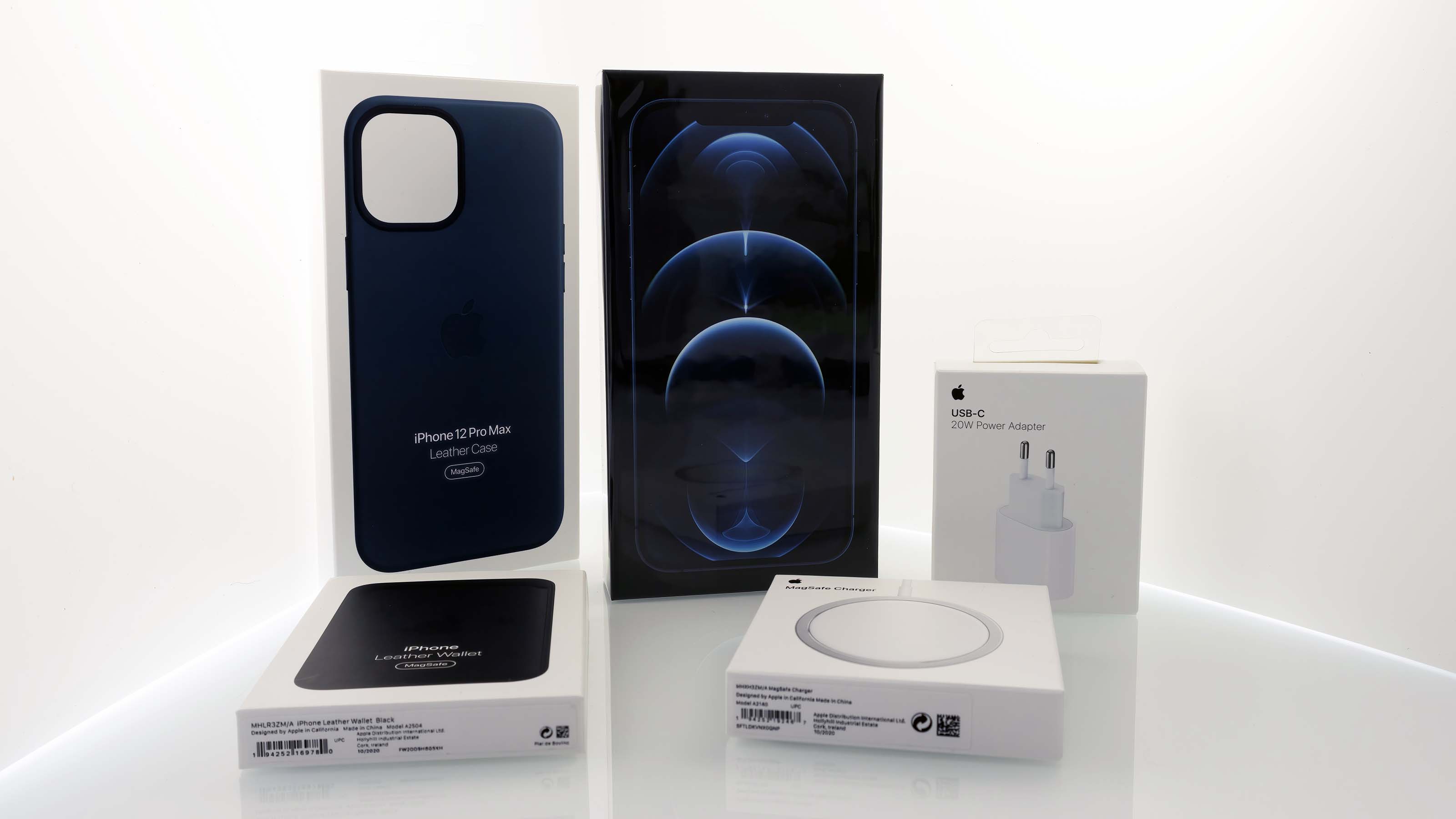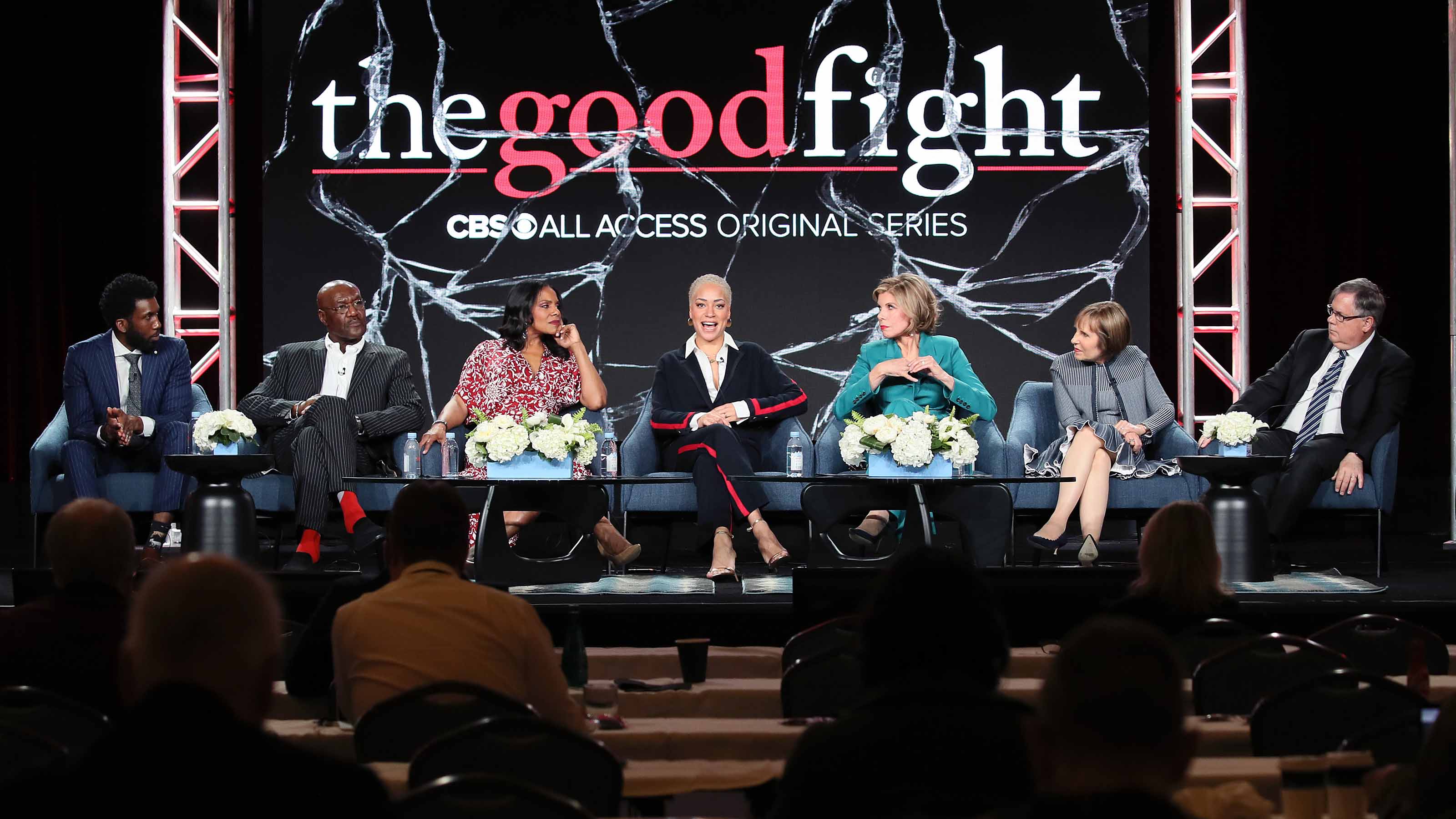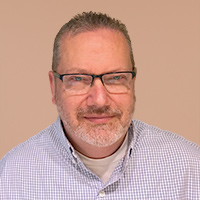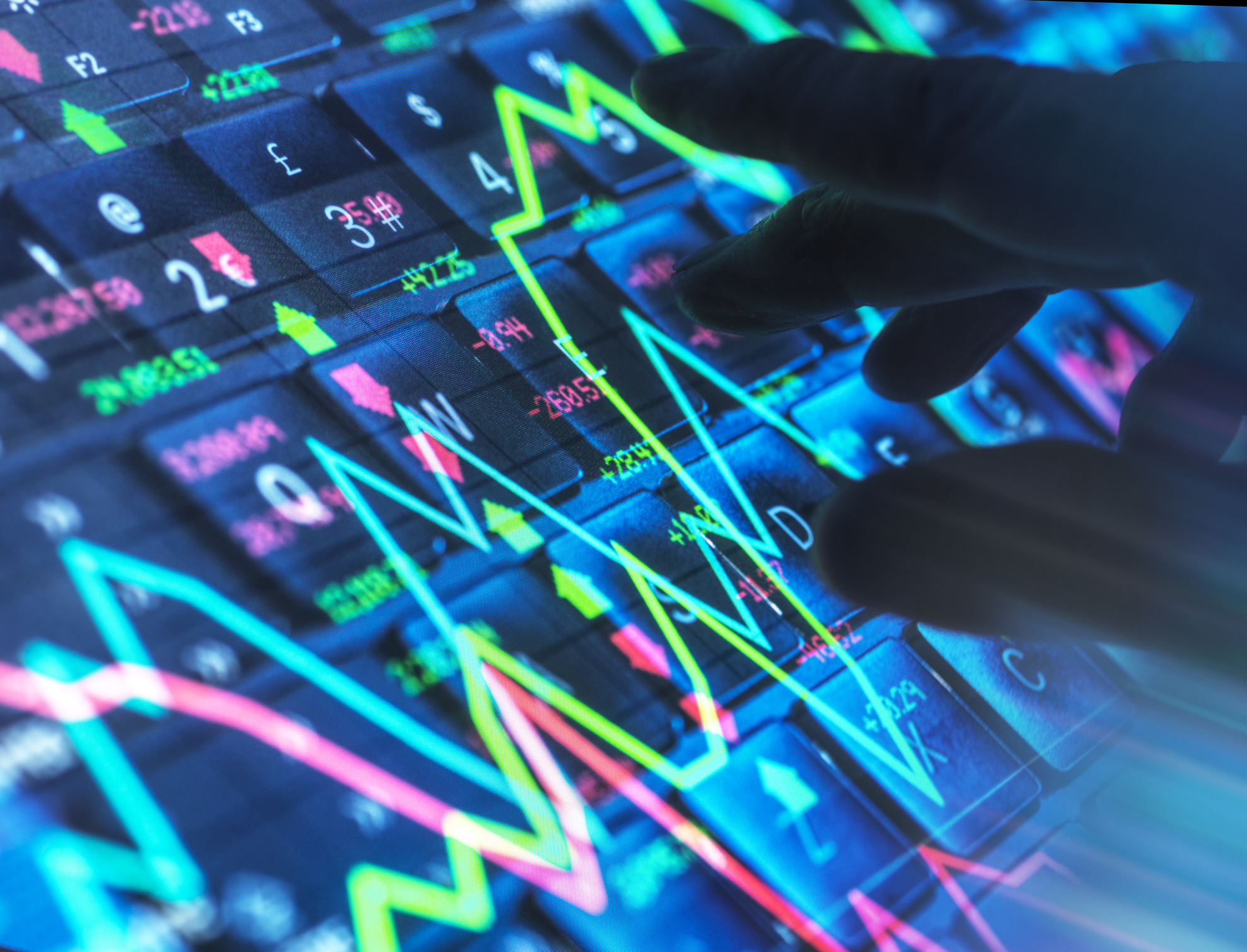
We waited years for the video streaming war to begin.
Well, it's here. It's heated. And it involves a host of well-backed streaming video stocks vying for relevancy amid a jam-packed crowd.
Netflix (NFLX) largely had its way over the past decade. It licensed popular content from other media companies and supplemented that with its own shows, becoming the undisputed industry leader along the way. Netflix started offering its streaming video service in 2007, and by the end of 2018 it claimed 139 million subscribers. In that time, the company faced a few half-hearted attempts to grab a piece of the pie.
But in the past 18 months or so, the video streaming war has really gotten legs. Netflix has been losing content from its library as new streaming services bring their TV shows and movies back under their own umbrella as exclusives.
Apple (AAPL) launched Apple TV+ on Nov. 1, 2019. Just two weeks later, Walt Disney (DIS) launched Disney+. In May 2020, AT&T (T) launched HBO Max followed by Comcast's (CMCSA) NBC Peacock, which went live in July 2020. The latest big entry took place in January of this year, when Discovery (DISCA) launched its Discovery+ streaming service.
And given very recent news, HBO and Discovery+ could soon become an even bigger threat.
These represent just a few of the now dozens of video streaming services competing for consumer dollars and threatening to upend the traditional TV viewing industry. We're reaching the point where at least a few clear winners and possible losers are beginning to come into focus. After all, consumers first switched to Netflix to save on their cable bills. Even if fragmented content convinces many viewers to have multiple subscriptions, few are going to pony up to all the streaming services.
Here's a look at the major streaming video stocks, and how their offerings appear poised in the current content landscape.
Data is as of May 16.

Netflix
- Market value: $218.8 billion
- Streaming services: Netflix
Netflix (NFLX, $493.37) is the grandaddy of all the video streaming services, and the one to beat. The company started life as a mail order DVD rental service – taking on Blockbuster Video – before announcing in 2007 that it would begin streaming movies to its 6.3 million subscribers.
That move started inauspiciously, with the customers able to choose from 1,000 mostly older movie titles to stream over their PC as part of their $18-per-month DVD rental subscription.
But streaming video quickly gained momentum.
In 2008, Netflix made a huge move into taking video streaming mainstream. The company began snapping up the streaming rights for movies and TV shows, taking advantage of a disorganized marketplace and the desire by media companies to make "easy money." Recode describes what happened as a result:
"Netflix took the stuff Hollywood considered its leftovers and built a giant business with it – and ended up competing directly with the established media players, using their own content."
That content became more expensive over time as studios realized what had happened. When Netflix first acquired the rights to Disney movies in 2008, it paid $30 million; renewing that deal in 2012 cost $300 million. Netflix also began to invest heavily in producing its own content, releasing exclusive shows such as House of Cards and Stranger Things. NFLX spent more than $17 billion on original content in 2020, and that's projected to increase to a hair over $19 billion this year.
That spending has had to ramp up because now that other streaming video stocks have arrived in full force, Netflix is losing the rights to some of its most popular shows and movies. For example, Disney titles are all but gone, and The Office – the service's most watched show – disappeared this year, moving to NBC's Peacock.
NFLX faces three big challenges as the streaming wars kick off:
- Escalating costs for its content library, which is becoming more reliant on original material.
- Preventing churn, where subscribers ditch its service for the competition.
- Growth. Netflix currently has around 208 million subscribers worldwide. It has tapped most of the potential in the lucrative North American market. It has much more market to eat in the EMEA (Europe, Middle East and Africa) and the Asia Pacific regions, though subscribers there don't generate as much in revenues.
RBC Capital Markets analyst Mark Mahaney says if Netflix can replicate its current 57% penetration rate among U.S. households in global markets, it could add nearly half a billion subscribers. He calculates that kind of subscriber base would translate into earnings of $50 per share, and a $1,000 share price for NFLX within five years.
Netflix remains the king of streaming video, though growth will be more difficult to come by.

Comcast
- Market value: $269.6 billion
- Streaming services: Peacock
Comcast's (CMCSA, $58.68) NBCUniversal media arm was one of the inadvertent early catalysts for the phenomenal growth of Netflix. Two of the top three most viewed TV shows on Netflix in 2018 – by a huge margin – were NBC properties: The Office and Parks and Recreation.
NBC's Peacock is the latest of the big video streaming services to launch and features the network's most popular series. The Office became a Peacock exclusive in January 2021, when the Netflix license expired. Peacock also will produce its own new programming. While the focus of this new streaming service is on TV shows, Peacock also has a library of movies available.
Comcast is hoping to extend the reach of Peacock by offering the service with a free, ad-supported tier that has limited programming. Premium service with access to the complete content library without advertising starts at $4.99 per month for Comcast cable subscribers. Non-subscribers can also access that premium tier for $9.99, undercutting Netflix.
Peacock is late to the game, but it's seen as a necessary move for Comcast. The company lost 671,000 residential cable subscribers in 2019. NBCUniversal's cable network revenue dropped 2.2% that year. Peacock is a play to appeal to cord cutters as a Netflix alternative, but it also can be used as an enticement to keep Comcast cable subscribers onboard. In addition, the free, ad-supported tier offers an alternative to consumers who don't want to pay for another streaming service.
Last year, Comcast said it expected to spend $2 billion on Peacock between 2020 to 2021 to grow the service. It expects to have 30 million to 35 million subscribers by 2024, and generate $2.5 billion in annual revenues.

Walt Disney
- Market value: $315.3 billion
- Streaming services: Disney+, Hulu, ESPN+
Walt Disney (DIS, $173.70) has proven to be a savvy player when it comes to video streaming, and the company has positioned itself to become a powerhouse that rivals Netflix.
Disney was an early investor in Hulu – a U.S.-only streaming service with both paid and free, ad-supported tiers. In 2019, Disney bought out Comcast's stake to take full control of Hulu. This gave it an established streaming service with 28 million subscribers at the time.
Hulu will lose its NBC TV content, but it still gives Disney a platform where it can stream more mature content that might not be suitable for its family-friendly Disney+ offering. (Don't forget: Disney now owns not just ABC and its TV catalog, but also the TV and movie libraries of 21st Century Fox.)
The company's big-ticket entry is Disney+, which has proven to be an even bigger success than expected. The coronavirus pandemic hasn't hurt – its European launch during the height of the COVID-19 lockdown put more pressure on already strained regional internet infrastructure, requiring Disney to temporarily lower the video quality.
But Disney+ was always going to be a big deal, especially for families. The streaming service has exclusive access to Disney's back catalog of animated movies, as well as Marvel and Star Wars properties. Disney also has invested in new content, including The Mandalorian, which became the most streamed show in the U.S. shortly after launch.
Disney, which hoped to hit 30 million subscribers by the end of 2024, announced last May that it had signed up 54.5 million. By March, that number topped 100 million. The ability to bundle Disney+ with its other services has also had a halo effect, boosting subscribers for Hulu and Disney's ESPN+ sports.
Barely a streaming presence as 2019 wound down, Disney is now one of the top streaming video stocks. It's a clear winner. In fact, streaming revenues have helped counter the losses from closes parks and canceled cruises, allowing Disney to report a surprise profit for its fiscal first quarter.

Amazon.com
- Market value: $1.6 trillion
- Streaming services: Amazon Prime Video
Amazon.com's (AMZN, $3,222.90) Amazon Prime Video is an interesting case. It has been around for a long time in one form or another (starting as Amazon Unbox in 2006). The company licenses content, but also spends a lot of money on original programming – to the tune of an estimated $7 billion in 2019.
You can subscribe to Amazon Prime Video for $8.99 month. However, Amazon isn't really running this video streaming service just to compete against other streaming video stocks. Instead, Prime Video is one of the big enticements to paying for an Amazon Prime membership. A $12.99 monthly Prime membership includes free shipping and other benefits, along with free access to Amazon Prime Video.
That Amazon Prime membership is a big deal for Amazon. In 2018, Prime members spent an estimated $1,400 on average shopping on Amazon.com, compared to $600 for non-Prime members. With 200 million paying Prime members worldwide, that extra spending adds up quickly.
Amazon Web Services (AWS) might be the company's profit center, but e-commerce still accounts for 90% of AMZN revenue. Keeping those online sales growing is a key driver of Amazon stock. That makes the company's ongoing investment in Amazon Prime Video a smart move, regardless of whether it's actually making money from video-specific subscriptions.

Apple
- Market value: $2.1 trillion
- Streaming services: Apple TV+
Apple (AAPL, $127.45) has had a long presence in TV streaming hardware (the Apple TV) and video rentals/purchases (iTunes). However, in November 2019, the company joined the video streaming race with its Apple TV+ service.
At $4.99 monthly, Apple TV+ is considerably cheaper than other streaming video services. But there's a catch – the content is all-new, exclusive shows and movies. There's no library of favorites licensed from other media companies. Apple reportedly spent $6 billion on producing content for its launch lineup, but it's still pretty thin.
What's Apple's spin on streaming video, since Apple+ doesn't seem like it's in position to directly compete against the market's top streaming video stocks?
Apple TV+ has two key goals. The first is to boost revenue for its Services division, which has become increasingly important as iPhone sales slide. In its fiscal second quarter ended in March, that Services revenue hit $16.9 billion. That's up 26.7% compared to last year and makes Services the company's second-largest revenue generator, after the $47.9 billion that iPhone sales brought in.
The second goal is part of a tried-and-true Apple strategy: keep people locked into the Apple ecosystem. Look no further than the fact that the company gives away a free year of Apple TV+ with the purchase of an iPhone, iPad, Apple TV or Mac computer for proof. Apple TV+ is another enticement to keep customers buying Apple products.

Alphabet
- Market value: $1.5 trillion
- Streaming services: YouTube Premium
Alphabet's (GOOGL, $2,278.38) Google is a streaming pioneer. Its YouTube brand offers a wide range of streaming services including YouTube TV – a paid alternative to cable with up to 70 live network TV channels) – and the free original YouTube, which has been an online streaming video fixture since Google bought it in 2006.
But Alphabet's legit contender to take on Netflix is YouTube Premium, which costs $11.99 per month.
Google isn't really playing the same game as everyone else. YouTube Premium's key value proposition for subscribers is getting to watch all the videos shared on the free site without having to sit through annoying ads. (The company also throws in access to YouTube Music for free.)
Google has paid for a smattering of original TV shows and movies, but it's the user-generated content that's front and center – just without ads. This approach has made YouTube Premium popular with millennials.
In 2020, Google broke out the advertising revenue for YouTube for the first time. It amounted to an astounding $15.15 billion in 2019. It brought in $6 billion during Q1 2021 alone, up 49% year-over-year. That's just ad revenue, which doesn't include subscriptions for YouTube TV or YouTube Premium.
YouTube and YouTube Premium don't compete directly with other streaming video services in the traditional sense, but YouTube Premium will be tough competition if consumers are forced to narrow down their choices of which streaming video services to pay for. Especially if those consumers are in younger demographics.

ViacomCBS
- Market value: $25.2 billion
- Streaming services: Paramount+
Do you subscribe to ViacomCBS's (VIAC, $38.91) Paramount+?
Unfortunately for ViacomCBS, the likely answer is: probably not.
Paramount+ is the new name for CBS All Access, which launched in 2014 and is priced at $5.99 per month with commercials, $9.99 without. And despite more than six years of operation, a library of over 12,000 CBC TV show episodes, original content like Star Trek: Picard and access to live sports, All Access/Paramount+ hasn't made a huge splash in the streaming TV market.
In February, ahead of the changeover to Paramount+, ViacomCBS said it had 30 million subscribers across all its platforms. Admittedly, that includes some significant growth – its 17.9 million domestic subscribers were up 73% year-over-year. But it remains notably light on subscribers compared to larger services such as Netflix and Disney+.
Streaming revenues also aren't much compared to what ViacomCBS gets for licensing its content elsewhere. Combined streaming ad and streaming subscription revenues of $816 million, while up 65% year-over-year, are still less than half of VIAC's $1.8 billion-plus in "licensing and other" revenues.
Relatively low penetration, and the high value of its content library when licensed to other services, could result in Paramount+ eventually becoming a casualty in the streaming wars.

AT&T
- Market value: $230.2 billion
- Streaming services: HBO Max
AT&T (T, $32.24) owns HBO Max, a new streaming video service that offers the programming of HBO, content from WarnerMedia and a rotating selection of movies. At $14.99, it's on the expensive side, but AT&T is providing free access to most customers who already subscribe to HBO on cable.
HBO Max launched last May, and the company will be phasing out its existing HBO Go service.
One of the HBO Max wins – courtesy of the that WarnerMedia library – is Friends. The one-time second most-watched show on Netflix is now an HBO Max exclusive. The deal cost AT&T, though. Last January, the company said its WarnerMedia division lost $1.2 billion in revenue by forgoing licensing deals to make content available to HBO Max.
That said, AT&T's place in the streaming wars has changed overnight.
In the latest shakeup, on May 17, AT&T announced a deal that would see it spin off WarnerMedia and combine those assets with Discovery, creating a standalone streaming media powerhouse to take on market leaders Netflix and Disney+. Pending regulatory approval, the deal is expected to be completed by mid-2022.
There is no word yet in in terms of what this development holds for existing streaming services run by the two companies including Discovery+ and HBO Max. They could be kept separate or combined into a "mega" streaming service.
We explain what this could mean for current AT&T shareholders in a breakdown of the AT&T-WarnerMedia-Discovery deal.

Discovery Communications
- Market value: $18.0 billion
- Streaming services: Discovery+
One of the latest big-player newcomers to the streaming wars is Discovery+, launched on Jan. 4 by Discovery Communications (DISCA, $35.65).
The streaming service offers more than 55,000 episodes spanning over 30 years of programming from the company's networks, including HGTV, A&E, Discovery Channel and the Food Network. Monthly subscriptions cost $4.99 with advertising, or $6.99 per month without ads.
It also offers a free one-year subscription to select Verizon (VZ) customers.
In its first-quarter earnings report, the company said Discovery+ subscribers had already topped 13 million. However, that did come at the cost of sliding subscribers from its cable portfolio, which dropped 4% during the same period.
But like with HBO Max, this becomes a more difficult service to handicap amid the pending deal with AT&T. It's possible the two services are merged in what would be a much more appealing offering likelier to compete with the market's largest streaming video stocks.
Profit and prosper with the best of Kiplinger's advice on investing, taxes, retirement, personal finance and much more. Delivered daily. Enter your email in the box and click Sign Me Up.

Brad Moon is a tech industry veteran who contributes to a range of publications including Forbes, InvestorPlace and MSN Money and is an original member of the award-winning GeekDad blog. Over the past decade, he has also written about technology for Wired, Gizmodo, Shaw Media, About.com, The Winnipeg Free Press and others.
-
 Forget FIRE: Why ‘FILE’ Is the Smarter Move for Child-Free DINKs
Forget FIRE: Why ‘FILE’ Is the Smarter Move for Child-Free DINKsHow shifting from "Retiring Early" to "Living Early" allows child-free adults to enjoy their wealth while they’re still young enough to use it.
-
 7 Tax Blunders to Avoid in Your First Year of Retirement
7 Tax Blunders to Avoid in Your First Year of RetirementA business-as-usual approach to taxes in the first year of retirement can lead to silly trip-ups that erode your nest egg. Here are seven common goofs to avoid.
-
 How to Plan for Social Security in 2026's Changing Landscape
How to Plan for Social Security in 2026's Changing LandscapeNot understanding how the upcoming changes in 2026 might affect you could put your financial security in retirement at risk. This is what you need to know.
-
 Stocks Struggle for Gains to Start 2026: Stock Market Today
Stocks Struggle for Gains to Start 2026: Stock Market TodayIt's not quite the end of the world as we know it, but Warren Buffett is no longer the CEO of Berkshire Hathaway.
-
 Stocks End Volatile Year on a Down Note: Stock Market Today
Stocks End Volatile Year on a Down Note: Stock Market TodayAfter nearing bear-market territory in the spring, the main market indexes closed out the year with impressive gains.
-
 Stocks Extend Losing Streak After Fed Minutes: Stock Market Today
Stocks Extend Losing Streak After Fed Minutes: Stock Market TodayThe Santa Claus Rally is officially at risk after the S&P 500's third straight loss.
-
 Santa Claus Rally at Risk as Tech Stocks Slump: Stock Market Today
Santa Claus Rally at Risk as Tech Stocks Slump: Stock Market TodayThe Nasdaq Composite and Dow Jones Industrial Average led today's declines as investors took profits on high-flying tech stocks.
-
 My Top 10 Stock Picks for 2026
My Top 10 Stock Picks for 2026Each year, we ask an expert to pick 10 stocks that have the potential to beat the market over the next 12 months. Here are his choices for 2026.
-
 The Santa Claus Rally Officially Begins: Stock Market Today
The Santa Claus Rally Officially Begins: Stock Market TodayThe Santa Claus Rally is officially on as of Wednesday's closing bell, and initial returns are positive.
-
 Cooler Inflation Supports a Relief Rally: Stock Market Today
Cooler Inflation Supports a Relief Rally: Stock Market TodayInvestors, traders and speculators welcome much-better-than-hoped-for core CPI data on top of optimism-renewing AI earnings.
-
 Nasdaq Sinks 418 Points as Tech Chills: Stock Market Today
Nasdaq Sinks 418 Points as Tech Chills: Stock Market TodayInvestors, traders and speculators are growing cooler to the AI revolution as winter approaches.

